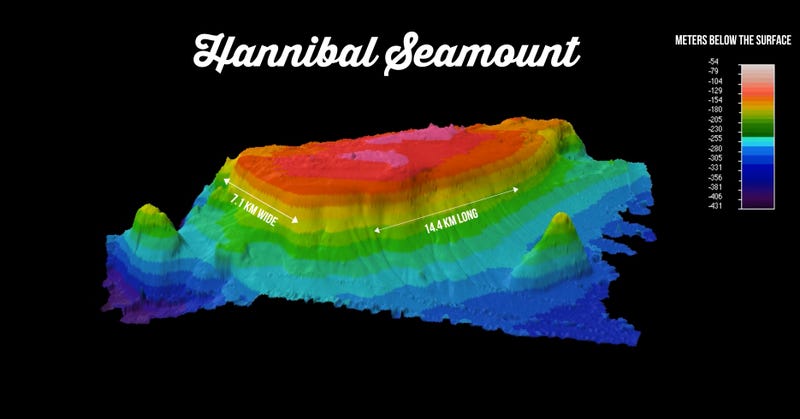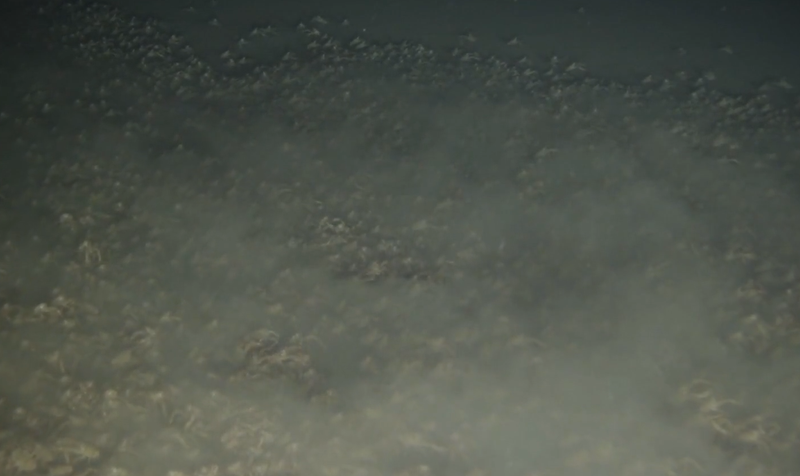
Researchers working off the coast of Panama have captured unprecedented footage showing thousands of red crabs swarming together in the oxygen-deprived waters just above the seafloor.
Led by Jesús Pineda of the Woods Hole Oceanographic Institution (WHOI), the team captured the video a year ago during a month-long expedition to the Hannibal Bank Seamount off the coast of Panama. The disquieting video shows a huge number of red crabs shuffling and bobbing along the seafloor in a scene right out of some kind of twisted science fiction movie.
Here’s how Pineda described it in a press statement:
When we dove down in the submarine, we noticed the water became murkier as we got closer to the bottom. There was this turbid layer, and you couldn’t see a thing beyond it. We just saw this cloud but had no idea what was causing it. As we slowly moved down to the bottom of the seafloor, all of the sudden we saw these things. At first, we thought they were biogenic rocks or structures. Once we saw them moving—swarming like insects—we couldn’t believe it.
The crabs were observed along the northwest flank of the seamount at depths of 1,164 to 1,263 feet (355 to 385 meters), and in an area of hypoxic (i.e. low oxygen) water. Seamounts are exactly that—mountains in the sea—and they serve as ecological “hot spots” to thriving communities of unique species. To date, scientists have only documented less than one percent of the ocean’s seamounts. And as this video shows, there’s still lots to learn about what’s going on in this ecological systems.

The observation is unique on two counts. First, this species has never been seen wandering this far south before. They typically hang out off the beaches of Baja, California, and along the California Current. So this region now represents a new southern territorial bound for the species. Second, this bizarre swarming behavior has never been documented before in red crabs.


Scientists have observed them in hypoxic waters before, prompting the researchers to wonder if low oxygen waters provide a refuge for this species from predators. These creatures are a staple food source for other fish, birds, and other marine animals.
[PeerJ]